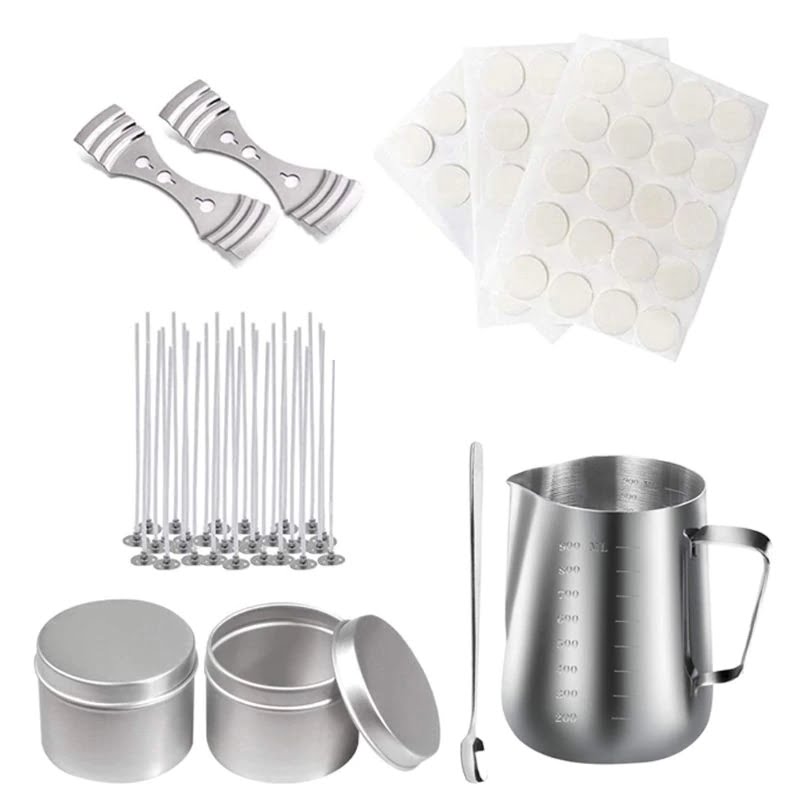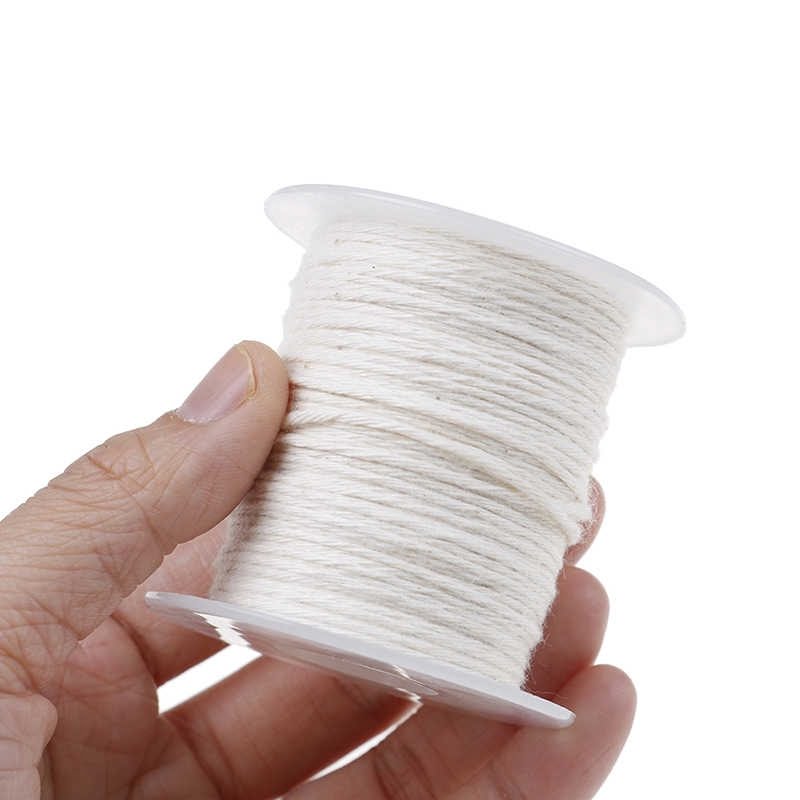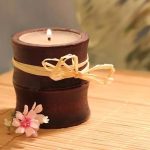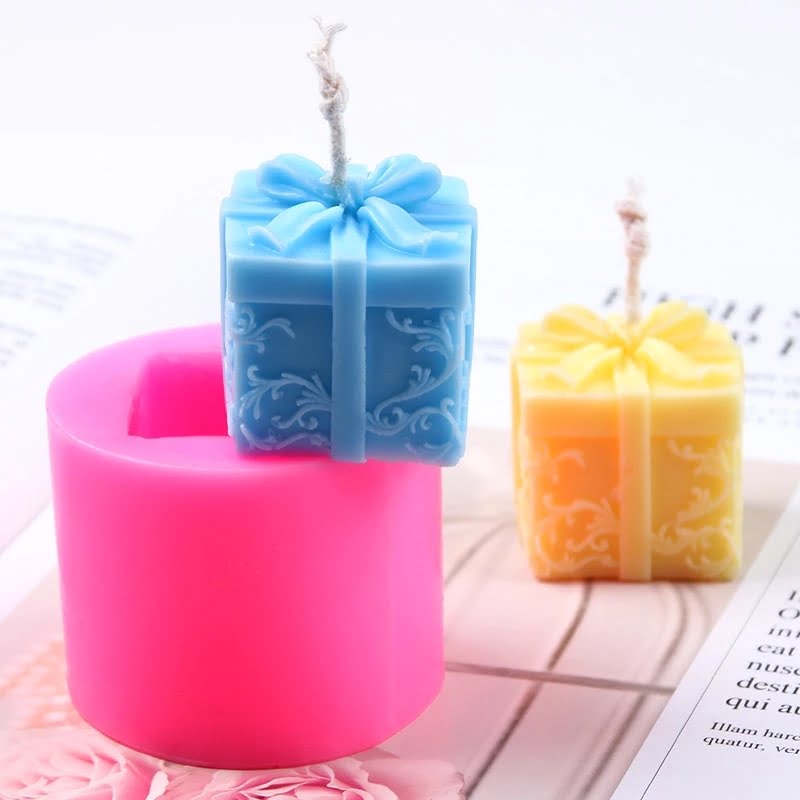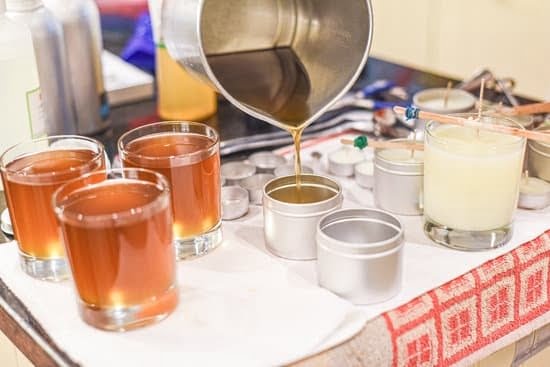Introduction
Tallow candles are a form of candle made from animal fats, usually beef or sheep fat. Tallow has been used historically since ancient times as a source of light. The Romans and Greeks were using tallow for tapers and torches by the turn of the first century AD. In the Middle Ages, tallow candles were quite popular in Europe, produced by boiling lard or suet until it was solidified. The candles could then be cut into small shapes with tools. During the 1700s, more refined methods of rendering fat into tallow emerged, making it easier to produce higher quality candles in greater quantities.
Candle making with tallow is relatively simple and does not require expensive equipment or materials. The process involves melting down tallow, pouring it into an appropriate container such as a shallow tin can, allowing it to cool and then trimming off the wick to make the necessary size candle. Once trimmed, they can be either dipped in scented wax or simply left plain depending on preference. Additionally, colors can be added to give additional aesthetic appeal and make them look even better! Home-made tallow candles can last up to eight hours each, providing excellent value when compared to commercially available paraffin wax varieties which must be replaced regularly.
Research Your Supplies
Before making tallow candles, it is important to research various tallow and wick materials that are available. Tallow, which is derived from animal fat, is typically a combination of beef or mutton fat combined with other substances such as beeswax. Popular brands of tallow include Purex, Dr. Adler’s, and Tallowman’s. When selecting a tallow for candle-making projects it is important to consider the melting temperature, hardness when melted and cool temperature and scent.
Wick material for tallow candles also comes in different forms such as cotton braid or cored cotton length. Cotton offers flexibility when working on different sizes and heights of wicks because it can be easily adjusted according to the size and shape of the candle being made. A benefit of using cored wick material is that all oils used in the candles will absorb into their core, acting as a “fuel” for burning the flame within the candle more efficiently. Adding an alloy core helps increase flame stability thus creating a better burning candle overall.
Preparing and Rendering the Tallow
Rendering the tallow is the first step in making tallow candles at home. Rendering involves slowly heating the fat sources until they reach a liquid state and all the water, fat binder proteins, and impurities separate out. The purest fats form a clear liquid known as neat’s-foot oil which can be used for lubrication and leather conditioner.
When rendering tallow at home, it’s important to use clean materials free from dirt, pet hair, or other contaminants. A slow cooker or double-boiler can be used to render tallow in small batches; however, many experienced candle makers recommend using a large pot with an open flame to quickly reach higher temperatures that results in cleaner fats and improved performance of finished candles. After rendering, it’s best to strain the fat through cheesecloth or another filtering material to obtain equal parts of smooth liquid fat and firmer white solidified oils that are ready for use in making tallow candles.
Enhancing the Experience
Tallow candles can be a great way to add beautiful ambiance to your home. Making tallow candles at home is a relatively simple process and the final product can be a fun and creative craft. To take it a step further, you can add fragrance and color to your tallow candles. Fragrances include natural essential oils as well as scent-infused waxes, while colors including everything from traditional white to bright pinks and greens can be added in the form of pastilles or liquid dyes. Adding these elements will help to personalize your candles and make them unique, allowing you to create pieces that fit into whatever setting you choose.
Considerations for Molds and Wick Materials
When making your own tallow candles at home, it is important to consider the proper combination of candle molds and wick materials. The hardness of your molds will determine how long a wick you should use; harder molds can typically use shorter wicks since heat builds up slower in them compared to softer molds. In addition, the size of the mold will determine the gauge of the wick; smaller or thin molds tend to require slightly larger diameter wicks while thicker or wider molds can usually accommodate thinner wicks.
The type of wick material used also needs to be taken into consideration when making tallow candles. Natural fibers such as cotton, linen, jute or hemp are recommended as they create a bigger flame that reduces smoking and has slightly longer burn times than synthetic fibers. You may wish to experiment with different sizes and types of wicks by testing their burn qualities in both hard and soft waxes, noting any differences between them in scent throw, maximum temperature capacity for a given container size, etc. Before finalizing decisions regarding which mold and best wick materials to use for your candle projects, it is always best practice to test out several options first until you achieve optimal results ” safety tips should always be followed when working with combustible materials!
Step-by-Step Guide for Making Tallow Candles
Making tallow candles is a rewarding and relatively simple process. It provides a way to create beautiful illumination for the home using time-honored techniques. The high-quality candles made with tallow are ideal for use in decorative displays or even as ritual candles, depending on the purpose desired. Here is a step-by-step guide on how to make tallow candles at home.
1. Gather the necessary materials and tools: This includes buying hard tallows, such as beef or pork fat, along with appropriate amounts of beeswax and other ingredients. A double boiler or slow cooker can be used to melt components together, while the tallow and wick need to be secured into holders with glue dots or loops of string. Additionally, you might require added supplies such as essential oils for scent, pipettes for pouring waxes, molds for shaping candles, thermometers for measuring temperatures of hot waxes and gloves to protect your hands from heat burns.
2. Prepare the tallow: Hardened fat from cows or pigs must first be chopped into small cubes so it may then be melted down quickly when heated in the double boiler or slow cooker ” about 20 minutes will do! Afterwards take out any pieces that have not fully dissolved yet before adding in additional waxes like beeswax – these will help keep your candle solid but also add a pleasant aroma once lit.
3. Prepare your wick: Make sure to cut lengthwise slices of twine/string that are just longer than what fits into your mold and then thread them through pre-made holes at ends of holders by either glue dotting or looping it around with string strategically placed within each side (wise up space available before gluing!) secure ends together firmly so they don’t unravel during the candle making process; this will also hold them still when pouring melted tallow mixture overtop afterwards!
4. Add essential oils: Once all three ingredients are ready – melted tallow fat cubes, selected extra waxes like beeswax, as well as prepared wick – you can now add essential oil fragrances (if desired) by carefully measuring out drops from pipettes into heated liquid being careful not to overdo it so it does not overpower smell when lit later on!
5. Pour the mixture into mold: With protective gloves on , hold bottom part of holder securely in place taking precautionary steps ensure wicks remain steady throughout entire process especially during this step when hot liquid needs to be poured overtop without dislodging any parts . Afterward let cool until holds solid shape without any slumping which usually takes an hour or two depending upon temperature outside/surroundings” once solidified remove from mold carefully as desired shape should already be formed due its denseness/sturdiness!
Cautions for Candle Use and Storage
Making tallow candles at home can be a fun and rewarding experience. However, it is important to take safety precautions in order to ensure the safety of yourself and those around you. Before beginning the process, familiarize yourself with all relevant safety information, such as fire hazard protocol and proper storage techniques for lit candles. It is equally important to understand that any open flame has the potential to cause danger.
When using tallow candles, ensure that the area is clear of any materials which may potentially catch fire easily. Always use a holder designed specifically for just this purpose”a heat resistant one which will not melt should it come into contact with a flame. Additionally, make sure the area is well-ventilated in order to prevent carbon monoxide buildup from burning wicks. Also take care when lighting these candles to properly extinguish them when not in use; blowing them out can cause dangerous sparks that may ignite an open flame nearby.
After making your homemade tallow candles, store them away from direct sunlight or high temperatures that could melt their wax casing. Keep them upright on a cool and dry surface so that each candle remains securely contained within its casing and does not leak or spill out onto other surfaces. If you would like to store your candles for long-term use or have children present in your home, be sure they are kept away from curious fingers which could accidentally start a dangerous situation by touching a wick before an adult can intervene.
By following these precautions before starting your candle-making project and taking measures during usage and storage of these items, one can enjoy an otherwise enjoyable activity with peace of mind knowing they’ve taken proper steps towards promoting safety in the home setting!
Tips for a Successful Candle Making Experience
Making tallow candles at home is a low-cost, rewarding activity that anyone can enjoy. The key to success when making candles from tallow is having the right supplies and following the best techniques. Here are some tips from the pros on how to make sure your candle-making experience is a successful one:
1. Get organized before starting your project; make sure you have all of the required materials and tools on hand. Gather up your wax and wick, wick tabs, wick pins, dip molds or double boiler, thermometer, wooden spoon or stirring stick, wax dye flakes (optional), essential oils (optional), and lab beakers or jars for pouring off excess hot wax.
2. Determine the number of candles you want to make and measure out the correct amount of wax accordingly”a kitchen scale come in handy for this step! Heat up your wax using slow and steady low heat to ensure it melts evenly.
3. While your wax is melting, you can prepare your wicks with the help of wick pins and prepare molds if needed with a layer of vegetable oil so that your candles will be easy to remove afterward. A double boiler works well for melting wax safely at an even temperature without having it burn on the bottom of the pot.
4. Check for temperature fluctuations regularly”creating uneven burns! Avoid drafts when making tallow candles by working in a room with closed windows and doors as this will help keep temperatures constant throughout production time.
5. When adding additives like colorant or essential oils take into consideration that they may reduce burning time but add extra aromas to any candle made with tallow! Take care when mixing these compounds together as they can become combustible if overheated or not combined correctly due to reactions between certain essential oil elements within them both ” so leave plenty of room in which to work when adding!
Epilogue
Making tallow candles at home offers many benefits. Not only is it a fun and therapeutic craft to do at home, but it also saves you money as beeswax and vegetable-based candle waxes can be expensive to buy. Furthermore, you can customize your candles based on the essential oils or fragrances you use when creating them. Additionally, if you are concerned with reducing your carbon footprint, making tallow candles is an excellent option since they burn cleanly with little soot. One final benefit of making tallow candles at home is that the natural fats used in tallow are renewable resources unlike paraffin wax which is a derivative of petroleum. Therefore, by making tallow candles yourself you can contribute to sustainable living while still enjoying beautiful and unique incandescent lights.

Welcome to my candle making blog! In this blog, I will be sharing my tips and tricks for making candles. I will also be sharing some of my favorite recipes.

